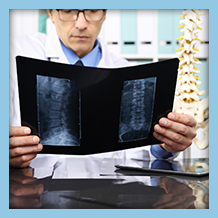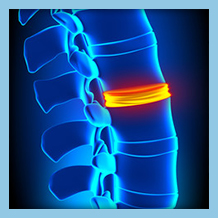

A lumbar microendoscopic discectomy is a new form of surgery used to treat herniated discs and reduce pain. New technologies make it less invasive than the traditional method, which means a faster recovery time for patients. Here is why you may opt for a lumbar microendoscopic discectomy over the more traditional method.
What is a Lumbar Microendoscopic Discectomy?
To put it simply, this procedure removes parts of herniated discs that are pressing on the spinal cord and causing pain. In cases where fixing or removing the entire herniated disc is not a good option, surgeons can just remove the small section that is causing problems.
In this case, the procedure is performed on discs in the lower back using new endoscopic tools. Endoscopic tools let surgeons perform complex procedures through very small openings without damaging the muscles or other tissues above the area where they need to work.
In a lumbar microendoscopic discectomy, a surgeon makes an incision that can be as small as half an inch. Then, they insert a small tube to make a path to the work area that can go around muscles and other tissue. Finally, they use small tools that can reach in, cut off, and pull out small pieces of the damaged disc. This reduces the amount of damaged tissue from the procedure, which means it takes much less time to heal.
Why Choose Endoscopic Treatments Over Traditional Methods?
The main reason to choose an endoscopic treatment over traditional methods is the reduced impact on the body. Surgery puts a lot of stress on patients’ bodies. Normally, it could take weeks for a patient to recover from a lumbar discectomy. The endoscopic method lets patients go home the same day of the surgery and make a full recovery within a week.
A big part of why this works is because surgeons avoid cutting tissue. In a traditional lumbar discectomy, surgeons have to make a larger incision and usually cut away the muscles to reach the spine. Then, they often have to remove the lamina, the bone that forms the ridge on the back of your spine. Doing things this way means the body has to do a lot more healing. It also means that patients are bedridden for much of it because moving can cause tearing in healing tissue, and the process has to start over again.
Another advantage that is not immediately obvious is the preservation of the herniated disc. Because it is herniated, that disc is already weaker than it used to be as it does not have the same support. Removing the lamina from it makes it even weaker, which is why many patients have to undergo a disc fusion procedure. This procedure fuses together the herniated disc with the discs above and below it to make it more stable. Few patients who use the endoscopic method have to undergo this fusion procedure.
Who Qualifies for a Lumbar Microendoscopic Discectomy?
To qualify for the procedure, you typically must have symptoms like lower back pain and pain in your lower body that can be caused by pinched nerves. In most cases, doctors will recommend other treatment options first to eliminate potential other causes and to see if less invasive options work. If no other options work, then your doctor may recommend this procedure.
What Are the Risks?
Lumbar microendoscopic discectomy has the same risks as other surgical procedures. Although methods of minimizing risks are used, there is always a risk during surgery.
The best way to minimize surgical risks is to work with a skilled and experienced surgeon and a strong medical support team. Having the support they need means that your surgeon can focus on the procedure and do the best job possible. It also means that a good surgeon will do everything needed to qualify you for the surgery first.
You should have a full assessment of your condition done by the surgeon and their support team before deciding that a lumbar microendoscopic discectomy is the best option. It is an effective procedure but should be saved for patients that need it. Otherwise, patients will needlessly endure the recovery period and stress of undergoing surgery they may not have needed.
Choosing the Right Surgeon
If you want to ensure your procedure goes well, spend the extra time it takes to ensure you have a great surgeon. You need someone with experience, credentials, support, and skills to manage the prep, surgery, and recovery processes.
We have some of the best spine surgeons on staff. Call Orthopedic & Laser Spine Surgery at (855)-853-6542 to schedule an evaluation.
